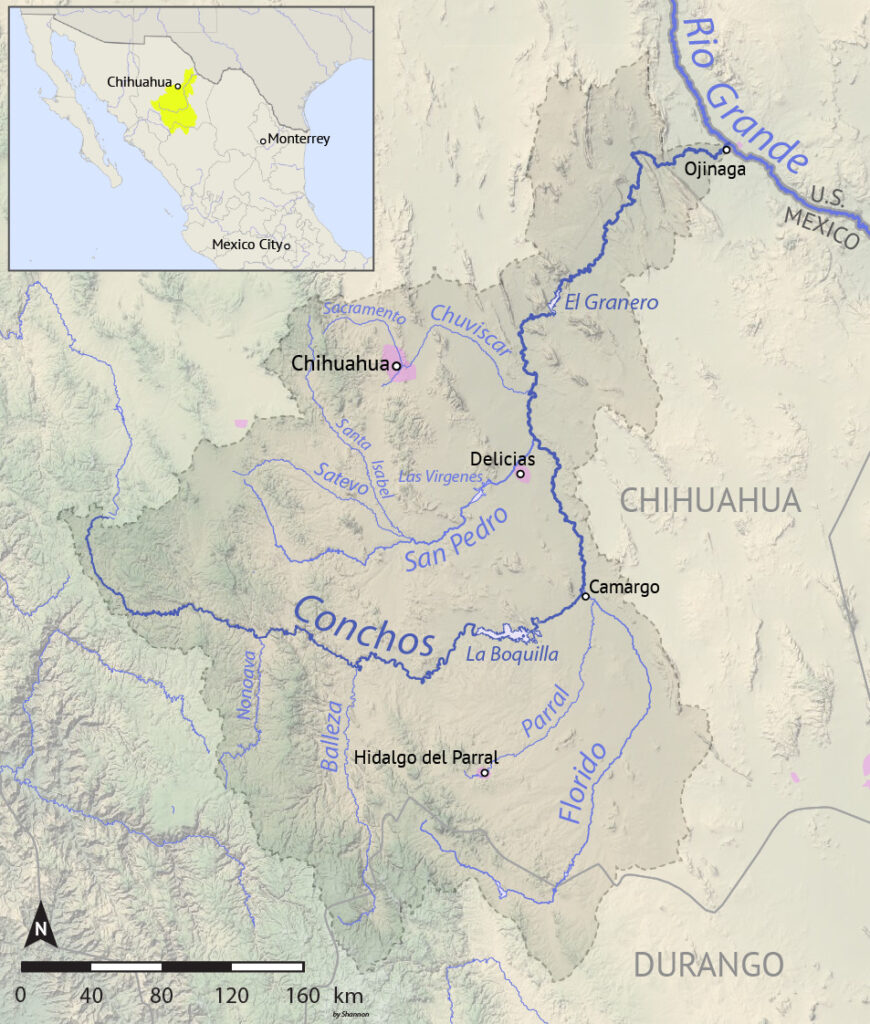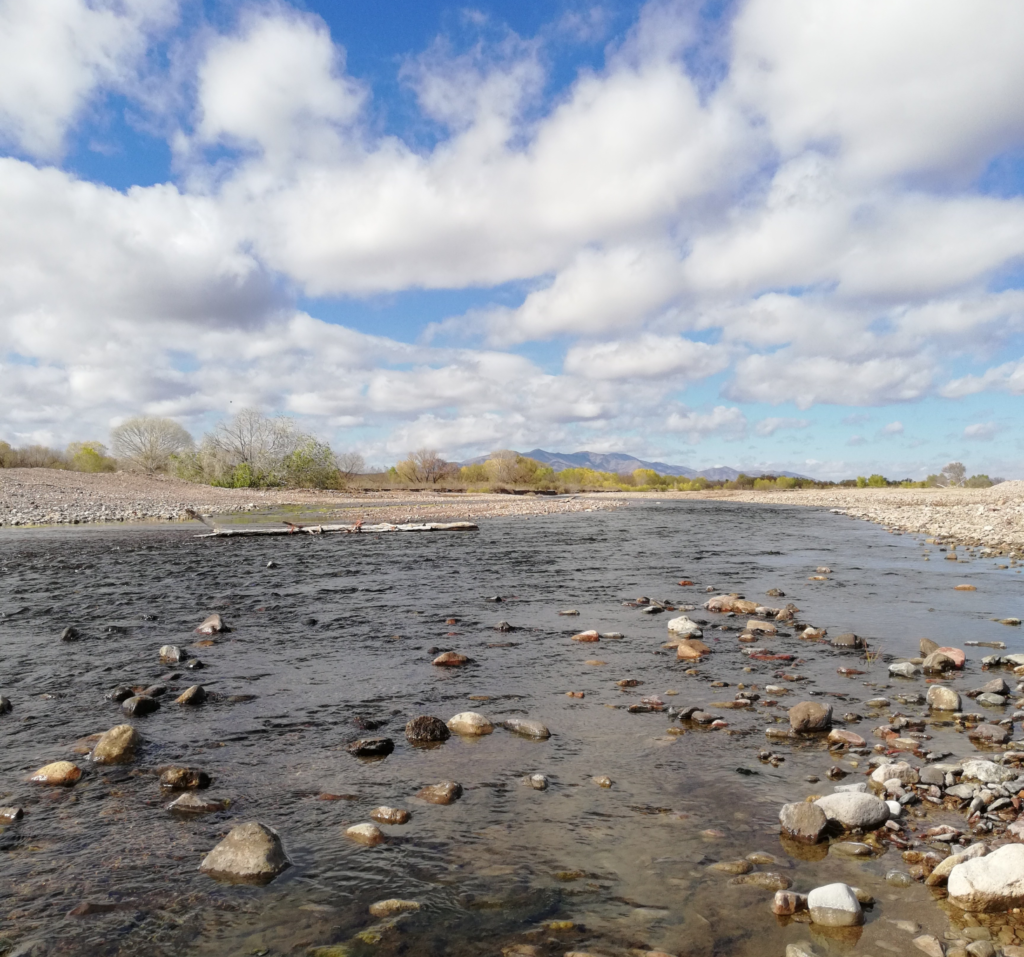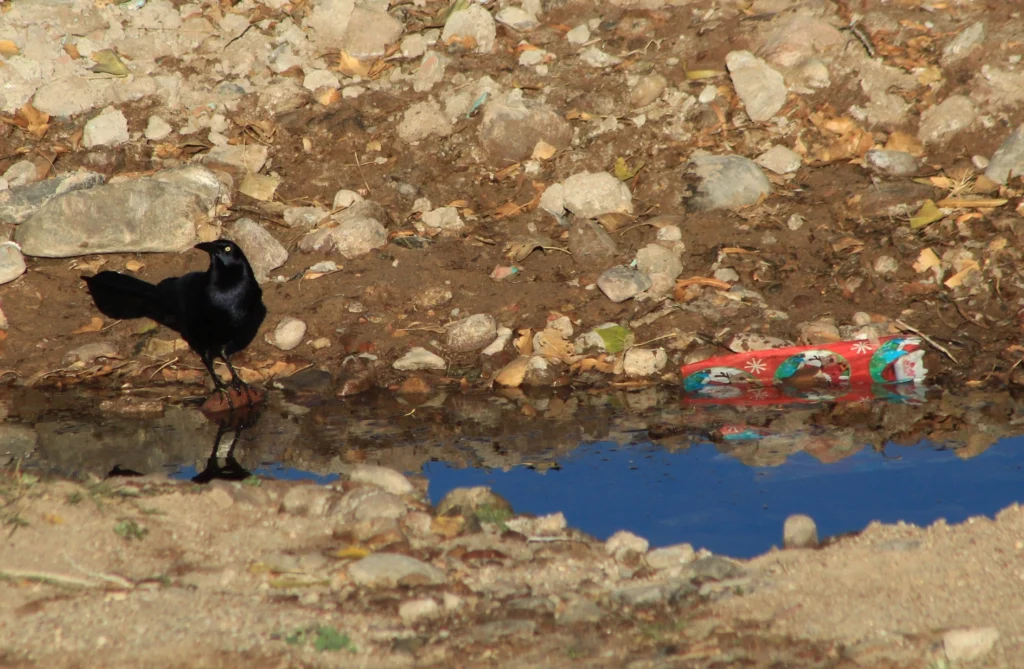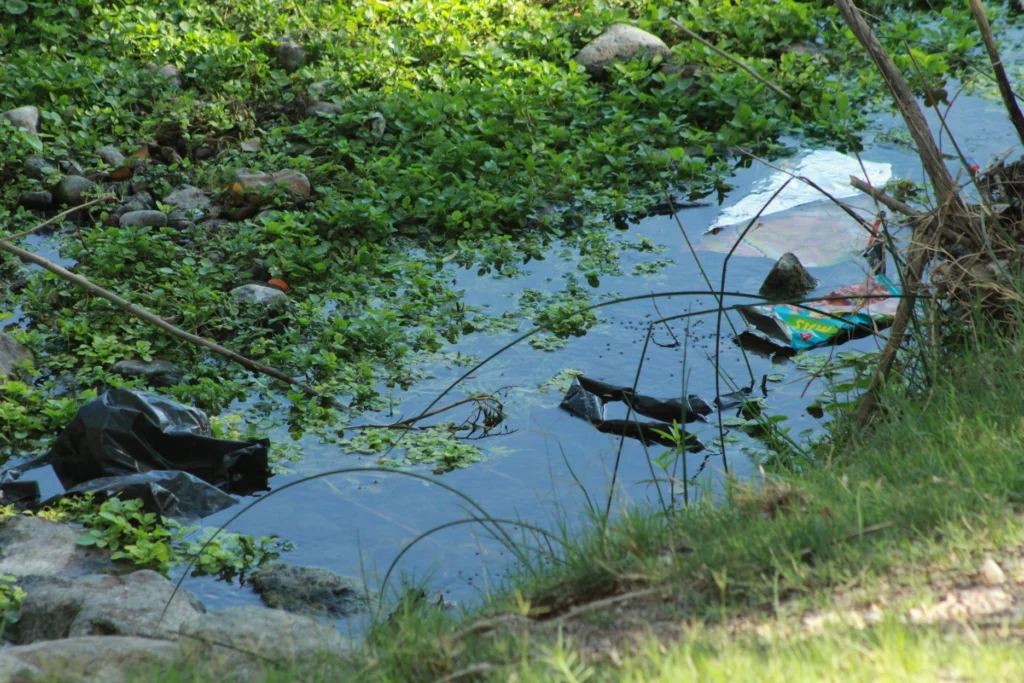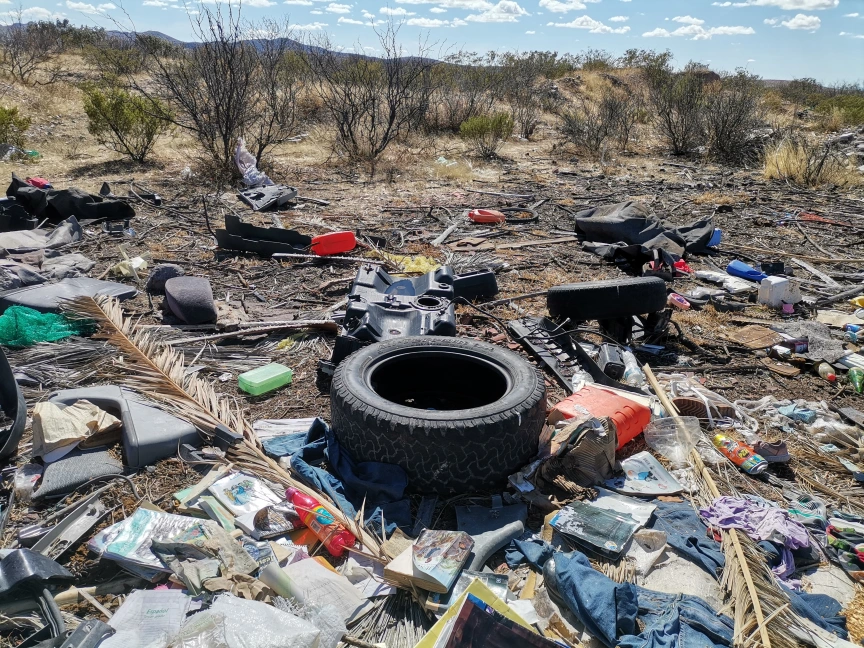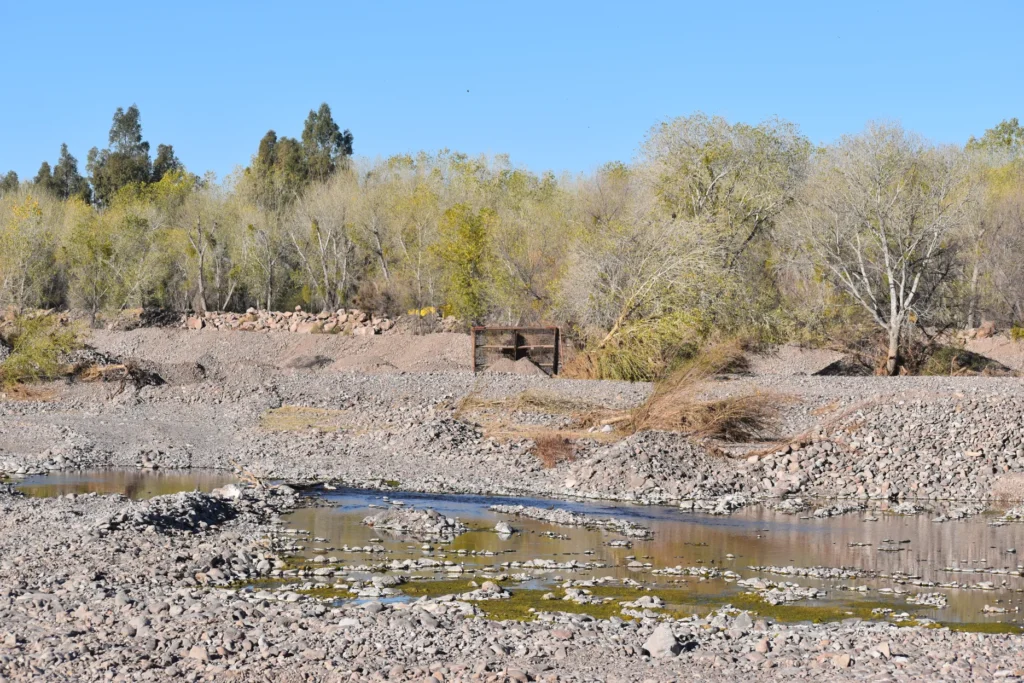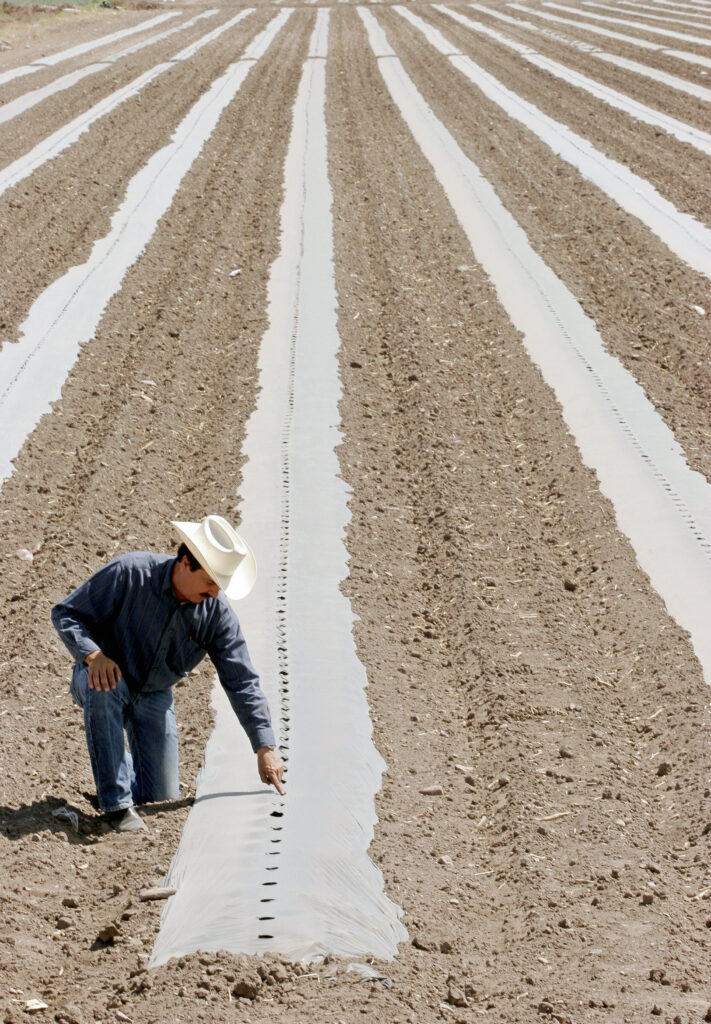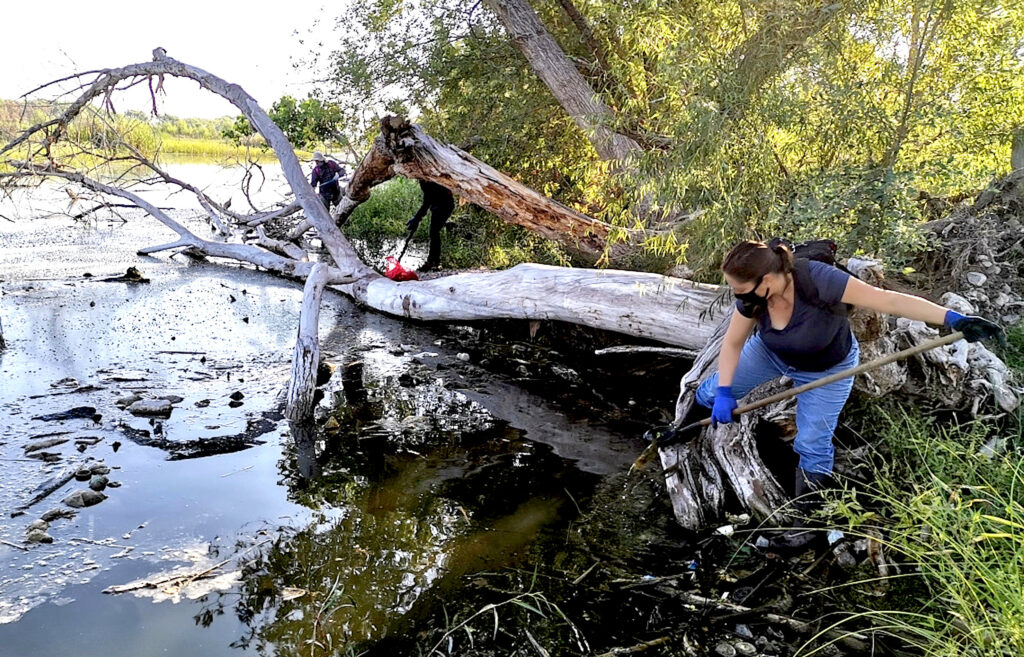The Mexican River Defenders Fighting for the San Pedro
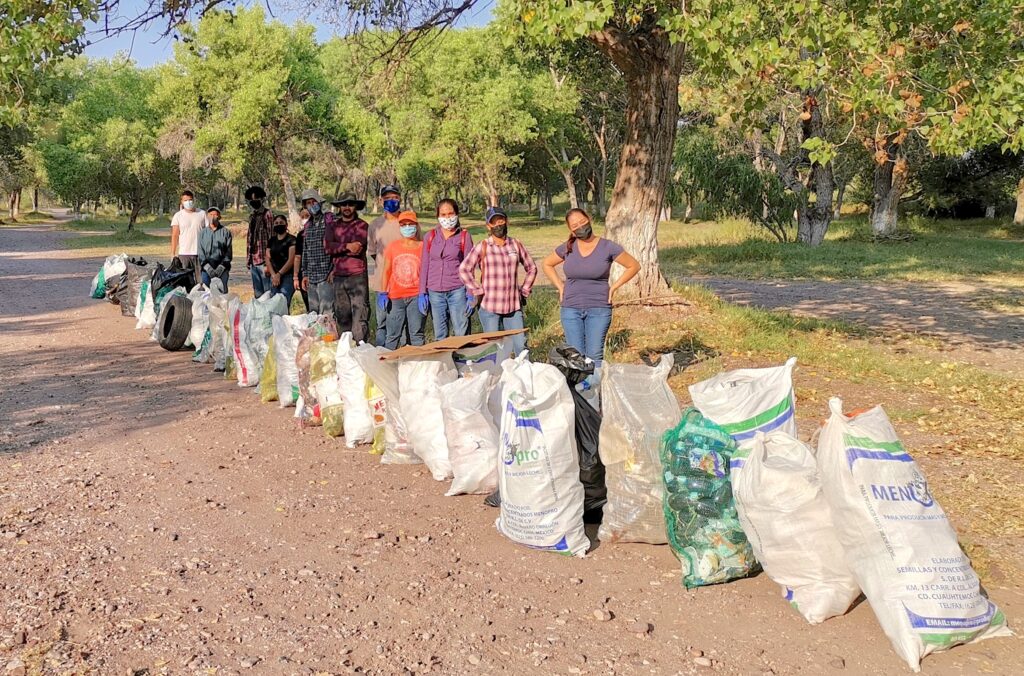
If you were to join the environmental group Vida en el Río San Pedro for a Saturday outing at their local river, you would not be fishing or rafting or having a picnic beneath the cottonwoods. Rather, you would likely be handed a pair of rubber gloves and a garbage bag and pointed in the direction of the nearest pile of trash.
Vida en el Río San Pedro (VRSP), which translates to Life in the San Pedro River, is a river-based resistance group located in Chihuahua, Mexico, near the small municipality of Meoqui. The group has gathered every Saturday since early 2020 to clean trash out of their namesake river.
At first glance, pulling garbage from the San Pedro seems like a straightforward method for dealing with a surface-level problem. But for members of VRSP, the weekly river cleanings stand for more than that.
As an environmental anthropology doctoral student, I visited VRSP in the spring of 2022 to interview members, join Saturday cleanings, and tour the wider Río Conchos watershed. I wanted to find out how the San Pedro River and the communities around it interact with and influence one another. In VRSP, I found a group of people bonded to a river in need of both care and defense.
“You could say that our cleaning campaign is a silent protest,” said Lorena, a VRSP volunteer. [1] [1] All names have been changed to protect people’s identities. “We come and do what [the authorities] should be doing. The fact that this campaign exists is the clearest demonstration that the authorities aren’t doing their jobs.”
THE SAN PEDRO RIVER UNDER THREAT
The San Pedro rises in Chihuahua’s Sierra Tarahumara, a subrange of the Sierra Madre Occidental, a major mountain chain that cuts slantwise from northwestern to central Mexico. Fed by seasonal rainfall in the sierras, the San Pedro runs for some 220 kilometers before converging with the Río Conchos. Together with other tributaries, such as the Florido and Chuvíscar, this system of waterways forms one of the most crucial river networks in northern Mexico.
For thousands of years, the rivers of Chihuahua flowed freely in wide, looping meanders across the desert landscape. They deposited healthy soils and supported a number of Indigenous communities, including the Julimes, Conchos, Apache, and Rarámuri. Their many descendants remain in the region and throughout Chihuahua and the U.S. Southwest to this day.
In the 1900s, the Mexican federal government built sprawling irrigation works and a number of dams within the Río Conchos Basin. These waterworks controlled the flows of the region’s rivers, transforming them into conveyances for cattle ranches and farms. In doing so, the government propped up what became a powerful and thirsty industrial-agricultural complex. Northern Mexico was the birthplace of the Green Revolution, an agricultural movement that promoted the use of synthetic fertilizers and pesticides, mechanization, monocropping, and centralized, water-intensive irrigation.
Between agro-industrial water contamination, farming diversions, illegal dumping, and intensifying periods of drought, the once thriving San Pedro is today severely damaged.
WHY TRASH?
In light of these broad-scale problems, ridding the San Pedro of trash might seem like a “cosmetic” solution, as one VRSP member characterized it. The group members are well aware of the systemic problems facing the rivershed—including political struggles involving international water-treaty disputes, which sparked civil unrest in 2020.
Still, for VRSP, focusing on local efforts like trash collection offers an important foothold for building a grassroots environmental movement. That’s because VRSP uses trash to index what the group recognizes as a societal disregard toward local rivers. These attitudes largely developed in the 20th century when people started viewing rivers as water conveyances for irrigation and industry as opposed to integral arteries for interconnected ecosystems.
Nowhere was VRSP’s critique of these attitudes more apparent than in how they used the physical presence of trash to spark deep conversations about people-river relations.
“We constantly gather evidence of the river’s deterioration,” said Sebastian, one of the group’s founders. “And we show this evidence to the community so they know that it occurs.”
To present this evidence, VRSP turns to digital storytelling. Their website includes sightings of rare or migratory birds, close-up images of spiders, and scenes of volunteers at work on riverbanks. These images are juxtaposed with others that show the more destructive sides of human activity, many of which manifest in the form of trash that turns up in the San Pedro River.
VRSP does not arbitrarily display these images of trash and destruction. Rather, they present them in the context of broader narratives, thereby connecting trash in the river with stories about people.
For example, one blog post displays pictures of migratory birds among discarded plastic bottles and bags. The accompanying text delves into the history of the invention and widespread use of plastic bags, sending up a critique of consumer cultures built on convenience. Another article describes how surgical masks began appearing in the San Pedro during the pandemic. The amount of medical waste challenges the idea—prevalent at the start of the pandemic—that COVID-19 would somehow result in less environmental pollution.
Yet another post documents an embankment of rubber tires that ripped into the river’s causeway after a recent flood. VRSP uses this incident as an opportunity to discuss how the channelization of the river for the benefit of agricultural interests had set up the conditions for more severe and damaging floods.
By holding up a self-reflexive mirror to society, VRSP’s growing digital platform also demands a different way of being in relation to the San Pedro. Each individual trash item points back to the attitudes and systems that produced it. In this way, the group asks a piercing question: Is this who we, as a society dependent on this river, really want to be?
VANQUISHERS OF THE DESERT
VRSP’s movement is persistent but up against staggering odds. Not far from where they collect trash, near the small village of Santa Cruz de Rosales, Sebastian and Rodrigo, another VRSP volunteer, showed me where the San Pedro River runs entirely dry.
As we walked across the river’s desiccated causeway, about the breadth of a football field, we passed the carcasses of dead animals. Dump trucks trailed plumes of dust along the levees. Within the river’s floodplain, construction crews mined rock and sand for building materials. On the river’s opposite side, a landfill bulged with tires, discarded metals, and slabs of chunked-up concrete. Sebastian and Rodrigo explained the extraction and dumping activities were unsanctioned; the authorities willfully ignored it.
I asked them why there was no water in the San Pedro. They pointed to an orchard of pecan trees, starkly green against the dried-up browns of the dusty riverbed. Farmers diverted all the water in this part of the river for irrigating crops, Rodrigo explained.
In the Centro-Sur region where VRSP operates, agriculture accounts for 90 percent of the economy, fetching an estimated 7 billion pesos, or nearly US$400 million, annually. Supporting this form of agriculture consumes an estimated 89 percent of water used in the state of Chihuahua.
VRSP takes the position that authorities should begin enforcing existing laws that guarantee the river system’s protection. In 2012, the Mexican government designated the San Pedro a wetland of international importance, largely because the river offers habitat along migratory flyways. Living up to this designation would mean keeping the river free of trash and debris, as well as entirely rethinking industrial agriculture systems.
Rather than grow crops that are “‘good’ for business,” Sebastian emphasized, farmers should grow plants “that are suitable for the climatic and resource conditions of the region.”
Such a transition would entail uprooting a way of life that is both economically and culturally entrenched. Many people I spoke with in the area stressed the necessity of industrialized agriculture as an economic backbone in a place characterized by poverty and outmigration to the United States. Without agriculture, they pointed out, there would be little opportunity for residents who wished to remain.
Moreover, many farmers, ranchers, and water managers in the region defend their rural lifeways with enthusiasm. They refer to themselves as the “vencedores del desierto,” or “vanquishers of the desert,” alluding to an ethos celebrating humankind’s mastery of nature.
But whether the agro-industrial complex ushering from the Green Revolution has indeed vanquished the desert remains to be seen. Communities may not have a choice about continuing large-scale farming. The industry increasingly teeters on a precarious foundation, especially as overexploitation of both surface and groundwater comes up hard against the realities of climate change–induced drought.
As one Chihuahuan critic recently put it, turning the vencedores’ slogan on its head: “el desierto jamás vencido.” The desert is never defeated.
BUILDING THE MOVEMENT
What alternatives could exist for communities trapped between drought, demand, and economic precarity? That’s what VRSP wants people to think about when engaging in river-cleaning campaigns and reading the group’s posts.
Over the past three years, the stretch of the San Pedro River that VRSP stewards has become far less riddled than before with beer bottles, unwanted furniture, and assorted plastics. But collecting and documenting trash and destruction represents only part of the group’s campaigning.
As VSRP members reminded me, the river collects life as well as trash. Enrique, one of the group’s co-founders, said he and Sebastian had registered hundreds of species of birds, amphibians, insects, fish, and plants in surveys along the river. These include both the Aztec rail (Rallus tenuirostris) and the Virginia rail (Rallus limicola)—rare, secretive, cinnamon-colored birds, respectively listed as endangered and threatened within Mexico by the federal government.
Without VRSP’s efforts, Enrique explained, there would be little knowledge of what lives in the river. “There’s not a single institution that dedicates itself to registering species here, little less defending them,” he said. “What we know about the river’s biodiversity we know because a small part of society takes its time to go and see.”
This “small part of society” draws from a diverse cross-section of the surrounding communities. When I visited, I cleaned the river alongside a professor, a retired member of the Mexican military, a chemist, a mother, and a child. Their ranks ebb and swell from Saturday to Saturday, from as few as six people to as many as 30.
Although VRSP’s movement is nascent, it shows signs of spreading. Their Facebook page has racked up some 5,500 followers. But more important than numbers and “likes,” Sebastian explained, they have become a reference point in the Centro-Sur community and in other parts of Mexico—an organization to which people turn to learn about the San Pedro River, the issues confronting it, and the abundance of life it supports.
One Saturday, after a river-cleaning trip, I was watching soccer with Rodrigo at his home in Meoqui. His phone chimed with a voice message from Sebastian, who excitedly told him to check out Facebook: A new river-based resistance group had sprung up along the Río Blanco in the state of Jalisco, and yet another group in Chihuahua had posted images of their own Saturday cleaning efforts.
Rodrigo clicked the link on his phone. The Chihuahua group called themselves “Vida en el Río Conchos.” Some 30 volunteers posed proudly amid rows of bulging trash bags.
Rodrigo was contemplative as he scrolled through their pictures. “They had a good turnout,” he said. “You see, maybe we are doing something valuable. They’re inspired by us. They’re fighting for their river the same as we’re doing here.”































